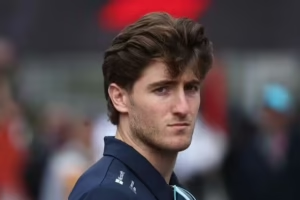Just in:Flavior Briatore proposes radical change to F1 co… read more

Flavior Briatore proposes radical change to F1 co… read more
Flavio Briatore, recently reappointed as an advisor to the Alpine Formula 1 team, has called for a significant revision to the current Formula 1 cost cap regulations. Specifically, he is advocating for driver salaries to be included within the overall team budget constraints. This proposal stems from his belief that such a move would help create a more equitable and competitive sporting environment.
The cost cap, originally introduced in 2021, was implemented to limit team spending and ensure a level playing field across the grid. While it currently places restrictions on most team expenditures—including car development and factory operations—certain categories remain exempt. These exceptions include marketing expenses, travel costs, employee sick leave, and notably, the salaries of the drivers and the team’s three highest-paid personnel. As a result, significant disparities in spending between teams still persist, even under the cap.
Briatore pointed out the wide range in driver salaries as a key issue. For instance, Red Bull’s Max Verstappen is believed to earn a staggering $75 million annually, making him the highest-paid driver on the grid. Meanwhile, young drivers like Isack Hadjar, Liam Lawson, and Oliver Bearman reportedly earn around $1 million. This discrepancy, Briatore argues, contradicts the purpose of the cost cap, as it allows wealthier teams to retain top talent without impacting their budget ceiling.
Alpine’s driver salaries reflect this gap as well, with their top driver reportedly making $10 million, while his teammate earns closer to $1 million. Briatore contends that this variance allows the richer teams to maintain a competitive advantage despite the supposed financial parity enforced by the cap.
“Formula 1 is very different now,” Briatore said in a recent interview following his return to the sport. “The cost cap was a great idea and has helped in many ways. But we must take the next step. Including driver salaries in the cap would make the system more complete and fair.”
Briatore emphasized that while the overall spectacle of Formula 1 has remained consistent—with exciting races, top-tier driver rivalries, and competitive racing—the costs involved have risen significantly. According to him, these rising costs have not translated into a better product for fans. “The show is the same,” he said. “The races look the same on TV. The best driver still wins. What has changed is how much we spend to get there. And that increase in cost has not improved the sport.”
In his view, the dramatic rise in expenditure, especially on salaries and other exempt areas, undermines the very purpose of having a cost cap in the first place. By bringing driver salaries within the cap’s jurisdiction, Briatore believes Formula 1 can better ensure long-term sustainability and maintain fairness among all teams, regardless of their financial backing.
As Formula 1 continues to evolve both as a sport and a business, Briatore’s comments are likely to spark discussions within the FIA and among team principals about the future direction of co
st regulations.








